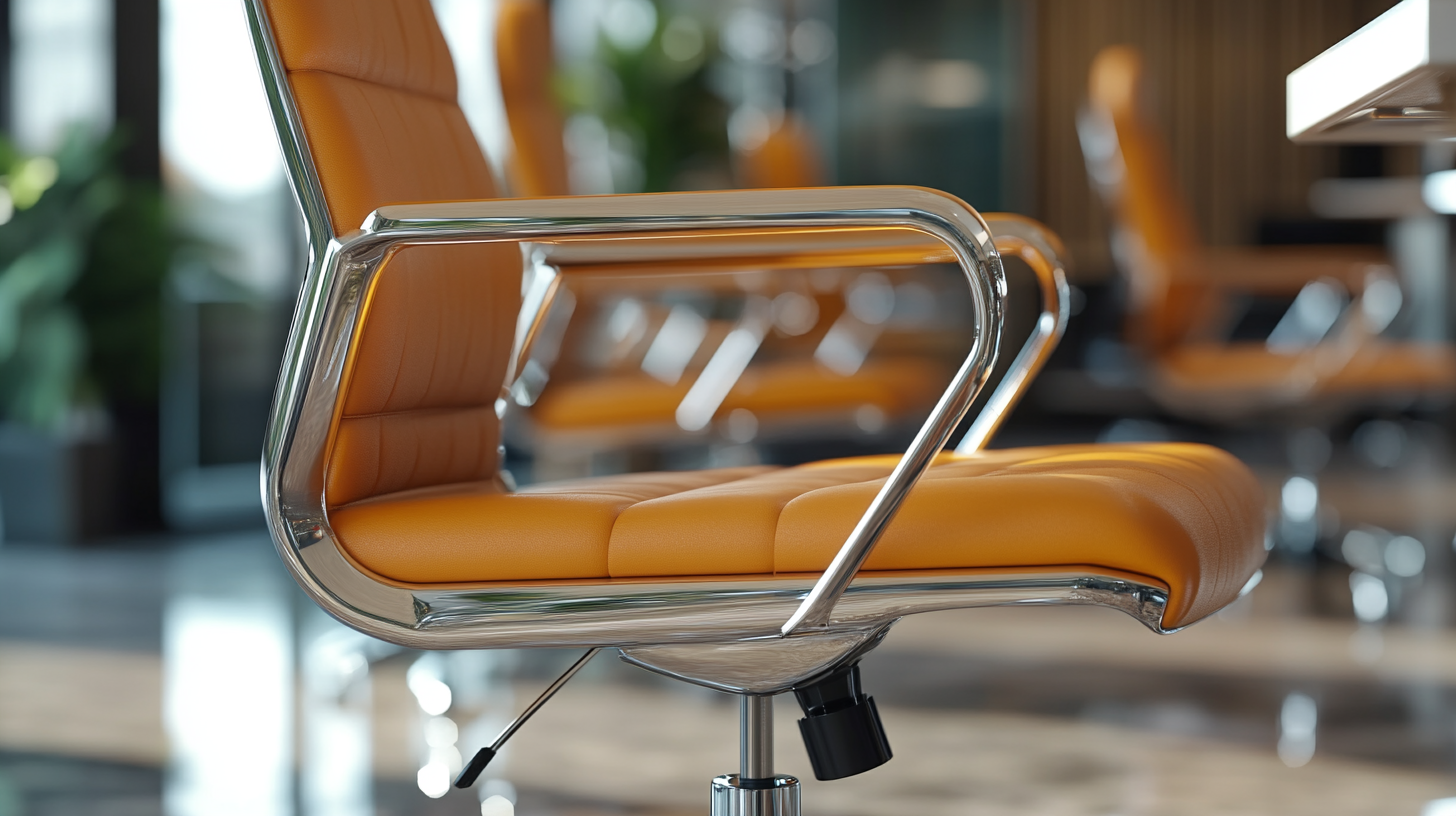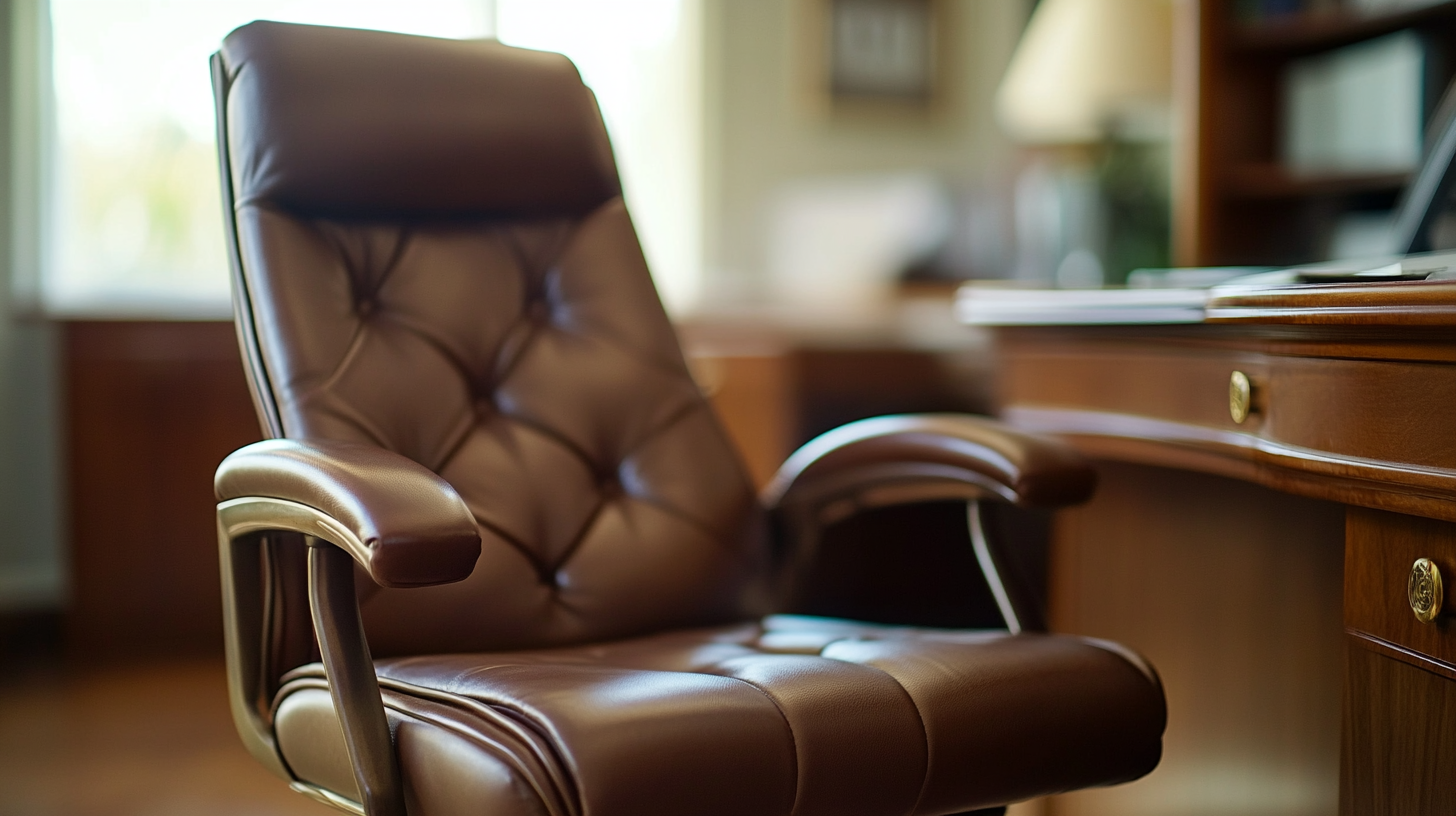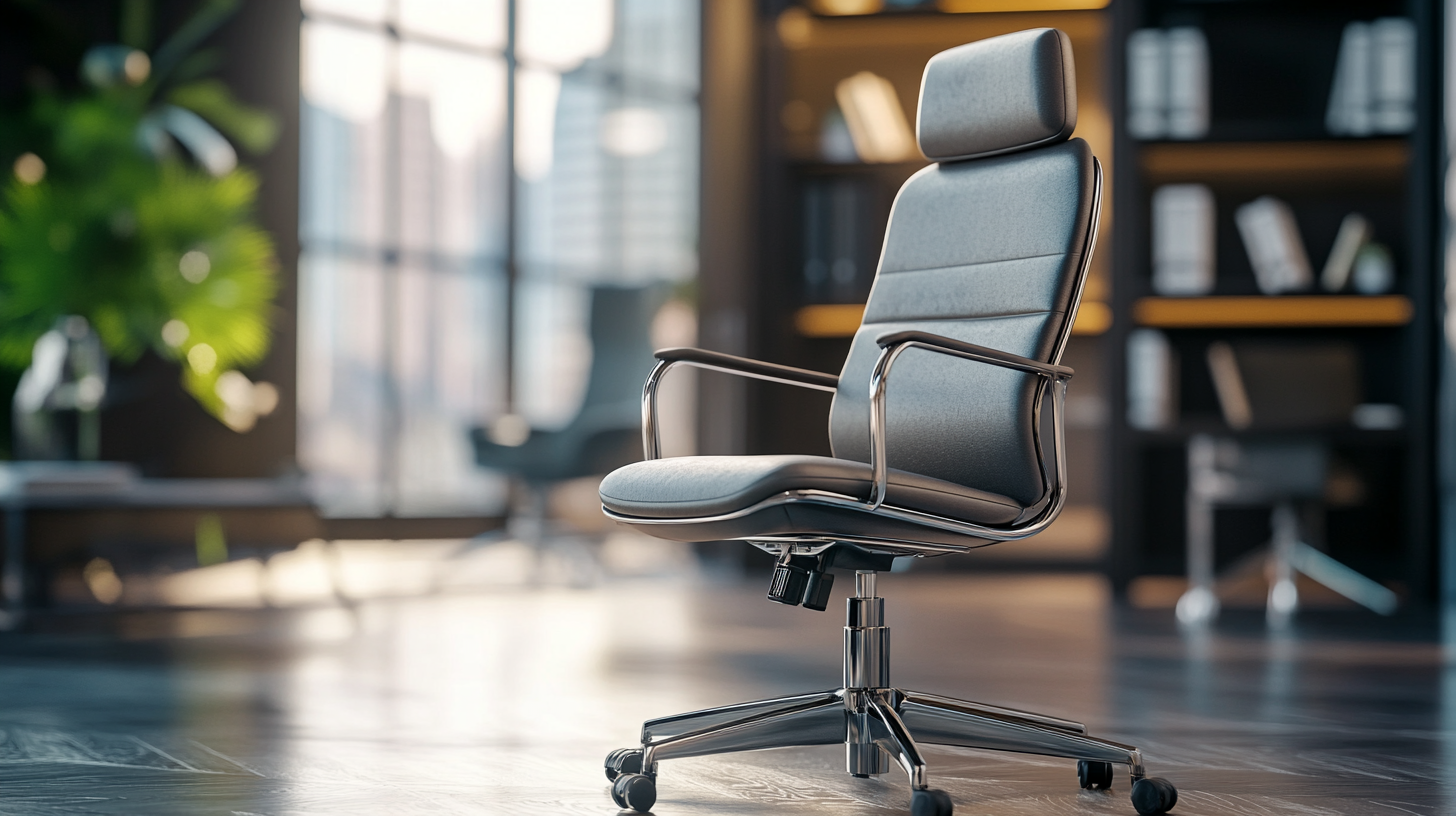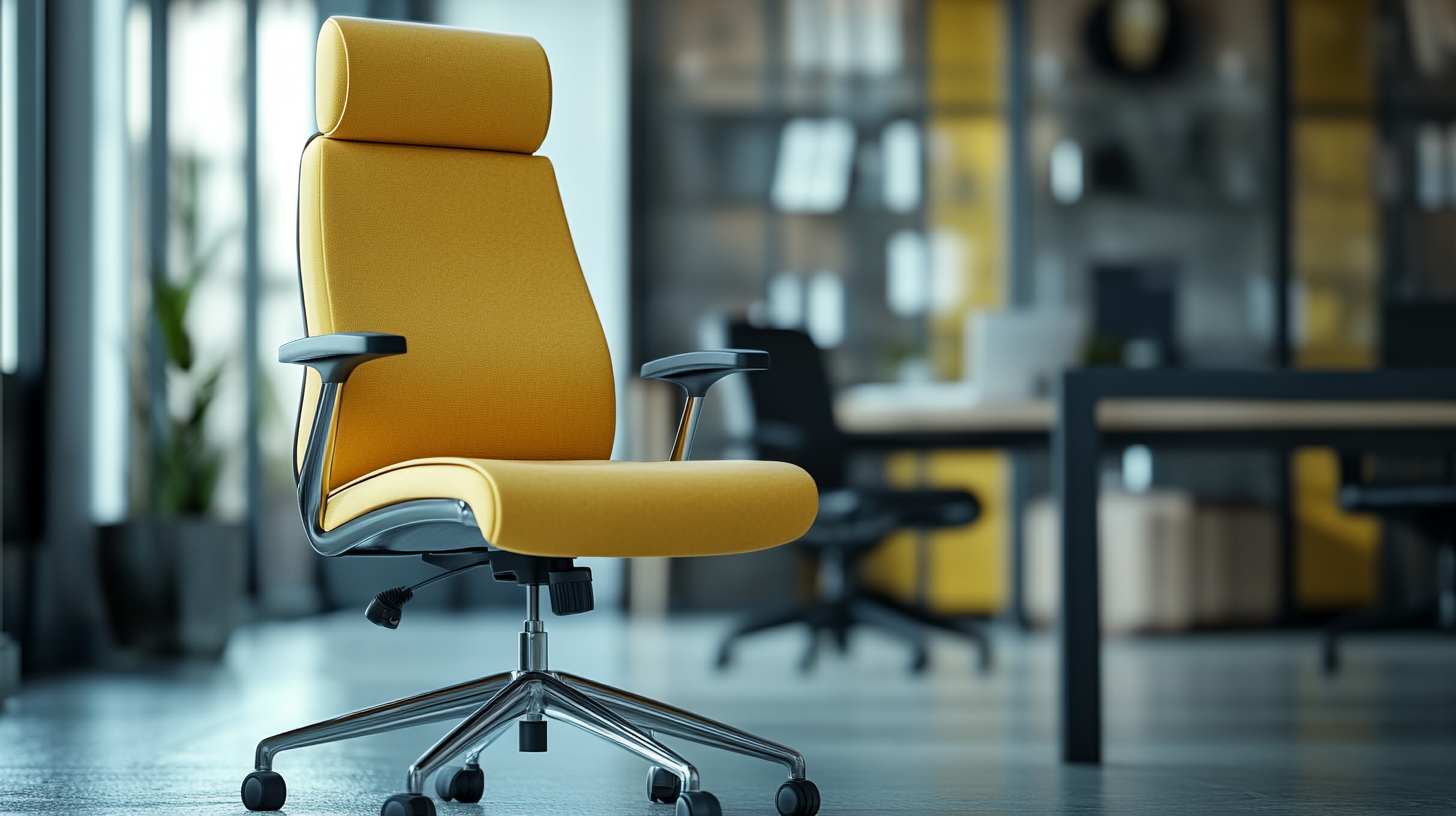In today's fast-paced corporate environment, the importance of ergonomics cannot be overstated, particularly when it comes to executive chairs. As leaders spend long hours seated at their desks, the design and functionality of these chairs play a crucial role in supporting their physical well-being and overall productivity. Executive chairs, characterized by their premium materials, adjustability, and sophisticated designs, are not merely about aesthetics; they are an essential investment in a healthier workplace. Ensuring these chairs meet ergonomic standards is vital for enhancing comfort and reducing the risk of musculoskeletal issues that can arise from prolonged sitting.
The workplace culture is rapidly evolving, with an increasing emphasis on employee health and productivity. Companies are beginning to realize that the choices made in executive chair selection can have profound effects on a workforce's output and morale. This blog will explore the key ergonomic standards for executive chairs, examining features such as lumbar support, adjustability, and materials used, and how they contribute to creating a conducive environment for leaders. By understanding and implementing these standards, organizations can not only boost productivity but also foster a culture of care and well-being among their executives.

In today's fast-paced work environment, the importance of ergonomic design in executive chairs cannot be overstated. These chairs are not merely a luxury; they play a crucial role in enhancing workplace productivity. Ergonomically designed executive chairs offer essential features such as adjustable height, lumbar support, and breathable materials, which collectively help reduce strain on the body during long hours of sitting. With the right chair, employees can maintain better posture, resulting in increased comfort and reduced fatigue, allowing them to focus on their tasks more effectively. Recent offerings, such as Amazon's current discounts of up to 78% on ergonomic chairs, highlight the growing recognition of this principle. These chairs are specifically designed for extended use, making them ideal for those who spend significant time at their desks. Among the best options available, products that blend comfort, support, and style have emerged as top picks for creating an optimal work-from-home setup. The right choice can truly transform a workspace, making it not only more appealing but also more conducive to productivity. Moreover, innovations like the Chill Chair, which features deep-tissue massage capabilities, further emphasize the trend toward enhancing employee well-being. Such advancements in ergonomic chair design serve to reduce stress and promote a healthy work-life balance. As organizations continue to prioritize employee comfort and productivity, investing in high-quality ergonomic chairs becomes a strategic decision for improving overall workplace effectiveness.

When it comes to maximizing workplace productivity, the design of executive chairs plays a pivotal role. Key ergonomic features such as adjustable lumbar support, seat depth adjustment, and armrest customization significantly influence both comfort and performance. According to a study published by the American Psychological Association, employees who use ergonomic furniture report up to a 17% increase in productivity due to improved comfort and reduced discomfort throughout the workday.
One critical aspect is lumbar support, which is essential for maintaining proper spinal alignment. Research from the Occupational Safety and Health Administration (OSHA) indicates that an ergonomic chair with appropriate lumbar support can reduce the risk of lower back injuries by 50%. Furthermore, the ability to adjust the chair’s height allows users to position their feet flat on the floor or rest comfortably on a footrest, promoting better circulation and reducing fatigue.
Armrests are another crucial ergonomic feature; adjustable armrests can alleviate strain on the shoulders and neck. The Human Factors and Ergonomics Society highlights that properly designed armrests can decrease the risk of repetitive strain injuries, leading to fewer sick days and lower healthcare costs for employers. Investing in such ergonomic chairs not only enhances individual well-being but also positively impacts overall organizational efficiency, making a clear case for their incorporation in modern office spaces.

The workplace environment plays an undeniable role in employee productivity and well-being. Recent industry statistics reveal a compelling correlation between ergonomic chairs and reduced absenteeism. Companies that invest in ergonomic seating solutions have reported a significant decrease in health-related workplace absences. By promoting proper posture and spinal alignment, ergonomic chairs help prevent musculoskeletal disorders, which are among the leading causes of employee absenteeism.
Furthermore, the ergonomic chair market is expected to surpass USD 19.12 billion by 2033, underscoring the growing recognition of the importance of ergonomic designs in the office. As employers prioritize employee health, the demand for ergonomic solutions continues to rise, driving innovations in chair designs that enhance comfort and productivity. With features such as adjustable heights, lumbar support, and material breathability, these chairs not only improve comfort but also encourage longer periods of focused work.
The tangible benefits of ergonomic chairs extend beyond just individual comfort; they contribute to overall organizational efficiency. Employees seated in ergonomic chairs report higher levels of satisfaction and concentration, which translates into better performance and productivity. Investing in these chairs is not merely about aesthetics or trends; it’s a strategic decision that fosters a healthier, more dynamic workplace.

In today’s fast-paced corporate environment, the significance of proper posture cannot be underestimated, especially for individuals in executive roles. Research from the World Health Organization highlights that approximately 1.71 billion people globally suffer from musculoskeletal disorders, largely attributed to poor ergonomic practices. Executive chairs designed with ergonomic standards can play a pivotal role in enhancing employees’ health and job satisfaction.
Proper posture while seated not only reduces the risk of chronic pain but also fosters improved concentration and productivity. A study conducted by the American Journal of Public Health found that employees who maintained an ergonomic posture reported a 45% reduction in work-related discomfort. Furthermore, an ergonomic chair can significantly lower the chances of fatigue, allowing executives to remain engaged and focused on their tasks.
The link between health and job satisfaction is also evident in the Gallup Research findings, which indicate that employees who are physically comfortable and active in their roles are three times more likely to feel satisfied with their work. By investing in high-quality ergonomic chairs, organizations can promote not only the well-being of their executives but also a culture of productivity and engagement in the workplace.
Implementing ergonomic standards in the workplace has shown to significantly enhance productivity metrics, particularly for workers using executive chairs. According to the Occupational Safety and Health Administration (OSHA), musculoskeletal disorders (MSDs) are responsible for over 33% of all worker injury claims. By introducing ergonomic seating solutions, such as those with adjustable lumbar support and seat height, companies report a substantial decrease in these injuries, which positively impacts overall productivity.
A study published by the International Journal of Environmental Research and Public Health found that employees who switched to ergonomic office chairs experienced a productivity increase of up to 40%. The research highlights that improved comfort reduces fatigue, allowing employees to focus on their tasks more effectively. Furthermore, one of the largest furniture manufacturers reported a 15% boost in employee performance metrics in companies that adopted ergonomic standards, demonstrating the direct correlation between a well-designed workspace and enhanced work output.
Moreover, cost savings from reduced absenteeism due to ergonomic-related injuries contribute to improved financial performance. The Liberty Mutual Workplace Safety Index estimates that businesses could save over $1 billion annually by investing in ergonomic workplace solutions. By prioritizing ergonomics in executive chair design, organizations not only foster a healthier work environment but also see tangible improvements in productivity and employee engagement.
Update your browser to view this website correctly. Update my browser now
